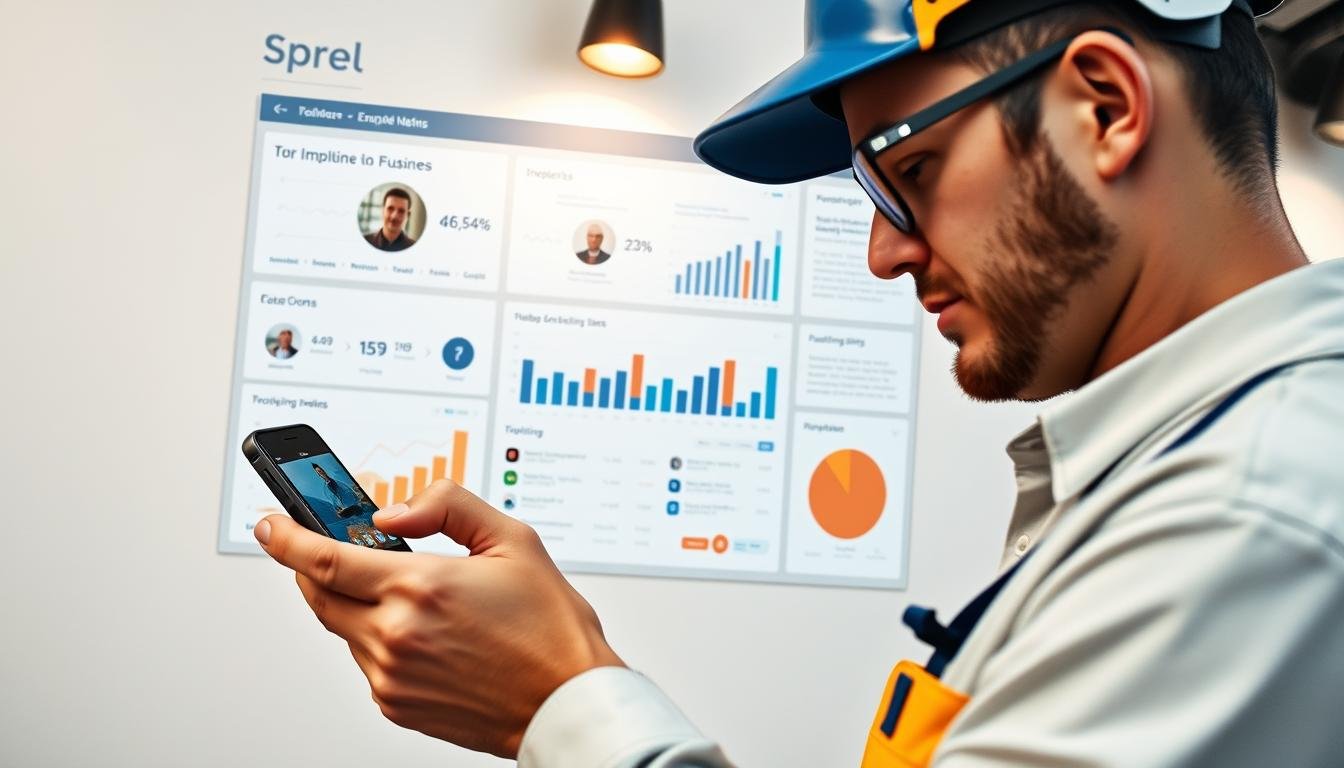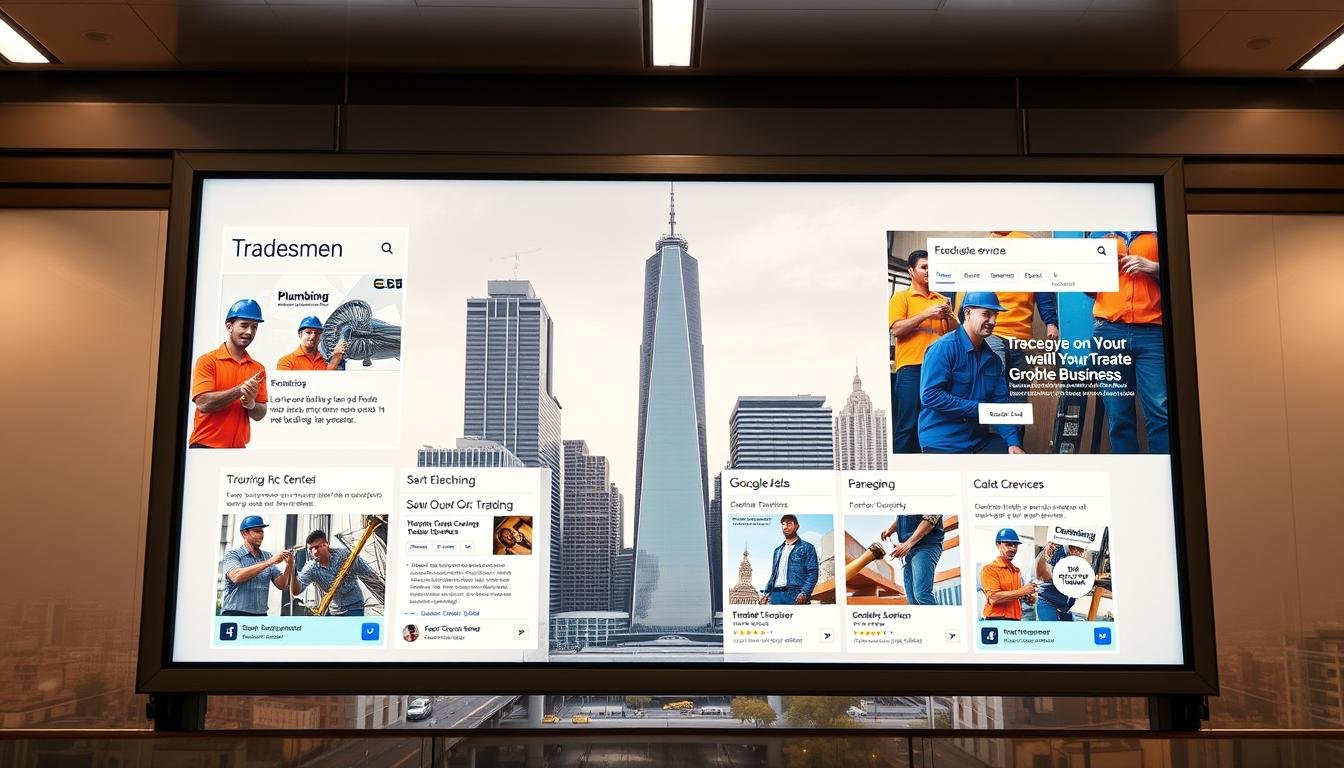
In the world of online marketing, SEO is key for businesses to shine online. Getting high-quality hyperlinks from other sites to yours is called link building.
We’re here to help you learn about link building. It’s important for making your website more visible and trusted. At first, link building might seem hard. But with the right help, you can build a strong online marketing plan.
We’ll cover the basics and key techniques. This will help you make smart choices and grow your business online.
Key Takeaways
- Understand the importance of link building in SEO.
- Learn how to acquire high-quality backlinks.
- Discover the impact of link building on your website’s credibility.
- Explore strategies for effective link building.
- Gain insights into measuring the success of your link building efforts.
What is Link Building?
Link building is key in Search Engine Optimization (SEO). It’s about getting hyperlinks from other sites to yours. It’s a vote of confidence for your webpage, showing it’s relevant and authoritative to search engines.
Definition and Basic Concepts
Link building is about making a network of links to your website. These links, or backlinks, are seen as endorsements of your content’s quality. The idea is simple: if a site links to yours, it must be valuable and worth sharing.
Why Links Matter for SEO
Links are vital for SEO because they help search engines understand the web’s structure. The more high-quality links pointing to your site, the higher your site is likely to rank in search engine results pages (SERPs). This is because links show a website’s credibility and trustworthiness.
The Value of Quality Over Quantity
Having many links might seem good, but quality is what really counts. A single link from a reputable site is more valuable than many from low-quality ones. Quality links come from authoritative sources that are relevant to your content. They greatly impact your website’s visibility and ranking.
The Evolution of Link Building Practices
Link building has changed a lot over the years, thanks to Google’s updates. It’s key to know how it has evolved to understand today’s practices.
Early Link Building Tactics
In the beginning, getting links was all about how many you could get. People used directory submissions, reciprocal linking, and even spam to get links. But, as search engines got smarter, these methods stopped working.
Google Algorithm Updates and Their Impact
Google’s updates, like Penguin and Panda, changed link building a lot. They aimed to fight spam and highlight quality content. This made link builders focus on getting links from trusted sites. Our team says keeping up with these updates is key for a good link building plan. For more info, check out our detailed guide on link building.
Current Best Practices
Now, good link building means creating value and getting links from important sites. This involves making quality content and building relationships with influencers and other sites in your field. By following these practices, businesses can boost their online presence and grow steadily.
How Search Engines Evaluate Backlinks
Knowing how search engines check backlinks is key for a good SEO plan. Our team has looked into the details of backlink evaluation. We’ve found out what matters most for search engine rankings.
Authority and Trust Metrics
Search engines look at a backlink’s authority and trust by checking the linking site’s credibility. Authority metrics are very important for a backlink’s value. For example, a link from a well-known news site is more valuable than one from a small blog.
We look at the site’s age, content quality, and how users interact with it. This helps us judge its authority.
Relevance and Context
The relevance and context of a backlink are also key. A backlink is seen as relevant if it’s in content related to the page it links to. For instance, a link to a fitness site in an article about workouts is more relevant than a link in a sidebar or footer.
Contextual relevance helps search engines understand the link’s purpose and value.
Link Diversity and Natural Profiles
A diverse and natural backlink profile is important for a healthy SEO presence. Search engines like websites with backlinks from different sources. This includes various domains, IP addresses, and content types.
A natural backlink profile grows slowly over time with high-quality links. Our team stresses the need for link diversity in a strong SEO strategy.
By knowing these key points, businesses can make their link building better. This can help improve their search engine rankings and bring more visitors to their site.
Types of Backlinks in SEO
Backlinks are key in SEO and come in different types. Each type has its own role in how your site is seen online. Knowing about these types helps you build a strong link strategy.
Dofollow vs. Nofollow Links
Dofollow links are like votes of confidence for search engines. They help your site rank better. Nofollow links don’t pass on SEO value but can bring in visitors and add variety to your links.
Editorial vs. User-Generated Links
Editorial links are earned through great content and are placed by the site’s team. They’re highly valued as they come from trusted sources. User-generated links, found in comments or forums, are less reliable but can help when used wisely.
Toxic Links to Avoid
Not all links are good for your site. Some can actually hurt your SEO. It’s important to spot and avoid toxic links, including:
Paid Links
Paid links are against Google’s rules and can get you penalized. They’re bought to fake higher rankings, which messes up search results.
Link Farms
Link farms are groups of sites made just to link to each other. They artificially boost link numbers. Getting involved in link farms can seriously hurt your SEO.
Spammy Comments
Spammy comments with links back to your site are seen as manipulative. Even though they’re nofollow, too many can damage your site’s reputation.
Keeping an eye on your backlinks and removing toxic ones is key to a healthy link profile.
| Type of Backlink | Description | SEO Impact |
|---|---|---|
| Dofollow | Passes SEO value, considered a vote of confidence. | Positive |
| Nofollow | Does not pass SEO value but drives traffic. | Neutral |
| Editorial | Earned through high-quality content, placed by editorial teams. | Highly Positive |
| User-Generated | Found in comments or forums, can be less reliable. | Variable |
| Toxic (Paid, Link Farms, Spammy) | Manipulative links that can harm SEO. | Negative |
White Hat vs. Black Hat Link Building
Link building is complex, and knowing the difference between good and bad practices is key. Your choice affects your site’s trustworthiness and search rankings.
Ethical Link Building Approaches
White hat link building sticks to search engine rules. It’s about making great content and forming real connections with other sites. Here are some ways to do it:
- Guest posting on sites with high authority
- Creating content that people want to link to
- Joining in on industry forums
Risky Tactics to Avoid
Black hat link building tricks search engines. It’s against the rules and can harm your site’s reputation. Here are some bad practices to steer clear of:
- Buying links or joining link schemes
- Using bots to make fake links
- Setting up doorway pages or duplicate content
Penalties and Recovery
Black hat link building can get you in big trouble. You might see your rankings drop or even get deindexed. If this happens, recovery means finding and removing bad links, asking for reconsideration, and making your link profile better.
| Link Building Approach | Characteristics | Risks |
|---|---|---|
| White Hat | Ethical, quality content, genuine relationships | Low risk, sustainable results |
| Black Hat | Manipulative, deceitful, against guidelines | High risk, possible penalties |
Effective Link Building Strategies for Beginners
Link building is key to SEO, and we’re here to help beginners. It’s important to use methods that are both ethical and effective.
Content-Based Link Acquisition
Creating valuable content is the first step. High-quality content that meets your audience’s needs can attract links. Think about making infographics, guides, or original research that adds value to your niche.
- Do thorough research to know what your audience wants.
- Make content that’s informative, engaging, and easy to share.
- Share your content on different platforms to get more eyes on it.
Guest Posting Done Right
Guest posting is great for building links and reaching more people. It can bring in traffic and make you more credible. Look for sites in your niche that accept guest posts and make sure your content is high-quality and relevant.

- Look for good guest post opportunities.
- Offer unique and valuable content ideas to site owners.
- Make sure your post follows the site’s guidelines and is engaging.
Broken Link Building
Broken link building means finding broken links and replacing them with a working link to your site. It takes some work but can be very effective. Use tools like Ahrefs or Moz to find broken links that match your content.
- Find broken links with SEO tools.
- Have or find content on your site that can replace the broken link.
- Reach out to the site owner and suggest your content as a replacement.
Resource Page Link Building
Resource page link building means getting your content listed on relevant resource pages. These pages link to valuable resources. If your content is high-quality, it’s a great chance to get a link. Look for resource pages in your niche and contact the owners.
- Find resource pages in your niche.
- Make sure your content is valuable and relevant enough to be included.
- Contact the owners of the resource pages and suggest your content.
By using these strategies, beginners can build a strong link profile. Remember, link building takes time and effort. Be patient and keep at it.
Creating Link-Worthy Content
To stand out online, your content must be worth linking to. It should be valuable, relevant, and useful to your audience.
Understanding Your Target Audience
Knowing your audience is key. What problems do they face? What do they want to know? Tailor your content to meet their needs for better linkability.
For example, industry professionals might prefer detailed, data-rich content. But, if your audience is more consumer-focused, create engaging, easy-to-read content.
Content Formats That Attract Links
Some content formats are more likely to get links than others. Let’s look at a few:
Original Research and Data
Content based on original research and data is highly sought after. It offers unique insights not found elsewhere. For instance, studies on consumer behavior or industry trends can attract many links.
Comprehensive Guides
Comprehensive guides are also highly linkable. They provide in-depth information, making them a valuable resource. Guides like “The Ultimate Beginner’s Guide to SEO” are great examples.
Visual Assets
Visual content like infographics, videos, and interactive tools can also get links. They are often shared and embedded on other sites, leading back to your content.
Here’s a comparison of different content formats and their linkability:
| Content Format | Linkability |
|---|---|
| Original Research | High |
| Comprehensive Guides | High |
| Visual Assets | Medium to High |
| Blog Posts | Medium |
Content Promotion Strategies
Creating great content is just the start. Promoting it well is also key. Use social media, email outreach, and influencer partnerships to reach your audience.
Rand Fishkin, a well-known SEO figure, said, “Content is the ultimate lever for attracting links.” Focus on quality and promotion to boost your link building.
“Content is the ultimate lever for attracting links.” – Rand Fishkin
To make your content more linkable, try these strategies:
- Optimize your content for SEO to improve visibility.
- Use compelling headlines to attract readers.
- Engage with your audience through comments and social media.
Building Relationships for Sustainable Link Building
Sustainable link building is more than just getting links. It’s about making lasting connections. In today’s digital world, the relationships you build can greatly affect your online image. We think it’s key to work with industry influencers, engage with your community, and partner with businesses for a strong link building plan.
Networking with Industry Influencers
Industry influencers can be a big help in your link building. By making real connections with them, you can get quality links from trusted sources. Here are some tips to keep in mind:
- Comment, share, and create content related to their work.
- Work together on projects or webinars for natural link opportunities.
- Share your expertise through guest posts or insights.
Community Engagement Tactics
Getting involved in online communities can lead to real connections and link chances. We suggest:
- Join forums and discussions to show your expertise.
- Share valuable content that community members will like.
- Host webinars or Q&A sessions to talk directly with the community.
Leveraging Business Partnerships
Business partnerships can also help with link building. By working with other companies, you can make content and resources that attract links naturally. Think about:
- Creating joint content through co-branding.
- Sharing resources and doing joint research.
- Starting affiliate partnerships for natural link building.
To show how these strategies work, let’s compare them:
| Tactic | Potential Links | Engagement Level |
|---|---|---|
| Influencer Networking | High | High |
| Community Engagement | Medium | High |
| Business Partnerships | High | Medium |
By focusing on these strategies, we can build a sustainable link building plan. This plan not only boosts our online presence but also builds a supportive network in our industry.

Internal Linking and Its Relationship to Link Building
External link building is key, but internal linking is vital too. It helps both users and search engines find their way around our site. It also spreads out link value, making our site better for everyone.
Creating a Strong Site Structure
A good site structure is key for internal linking. We must organize our content in a way that’s easy to follow. This means grouping content, using clear URLs, and making our site easy to navigate.
Strategic Internal Linking Practices
Good internal linking means linking to content that’s relevant and helpful. It helps users find more info and helps search engines understand our site better. We should use clear anchor text and avoid too many links, which can look spammy.
Balancing Internal and External Links
It’s important to balance internal and external links. Internal links help with navigation, while external links add credibility and value. We should aim for a mix of both, making our content more authoritative and useful.
Essential Link Building Tools and Resources
Our team has put together a list of key tools and resources for link building. To excel in this field, having the right tools is vital.
Backlink Analysis Tools
Backlink analysis is a key part of link building. Tools like Ahrefs and Moz give deep insights into your backlink profile. They help spot areas for improvement.
Outreach and Relationship Management Tools
Getting high-quality backlinks starts with effective outreach. Tools like Mailchimp for email marketing and HubSpot for CRM make outreach easier.
| Tool | Purpose | Benefits |
|---|---|---|
| Ahrefs | Backlink Analysis | Detailed backlink profiles, competitor analysis |
| Mailchimp | Email Marketing | Streamlined outreach, automated email sequences |
| SEMrush | Competitor Research | Competitor backlink analysis, keyword research |
Competitor Research Resources
Knowing your competitors’ link building tactics is valuable. Tools like SEMrush offer competitor analysis features.
Link Monitoring Solutions
Keeping an eye on your backlinks is key for a healthy link profile. Tools like Google Search Console help track your backlinks and spot issues.
Conclusion: Building a Long-Term Link Building Strategy
Creating a good link building strategy takes time and effort. We’ve looked at how link building has changed, why quality is more important than quantity, and how to get valuable backlinks.
A solid SEO strategy is key to growing your website’s traffic and authority. By focusing on content, guest posts, and resource pages, we can build a lasting strategy that works.
To succeed in the long run, we need to focus on building relationships with influencers and partners. We also need to make content that people want to link to. With a long-term strategy, businesses can boost their online presence and grow digitally.



